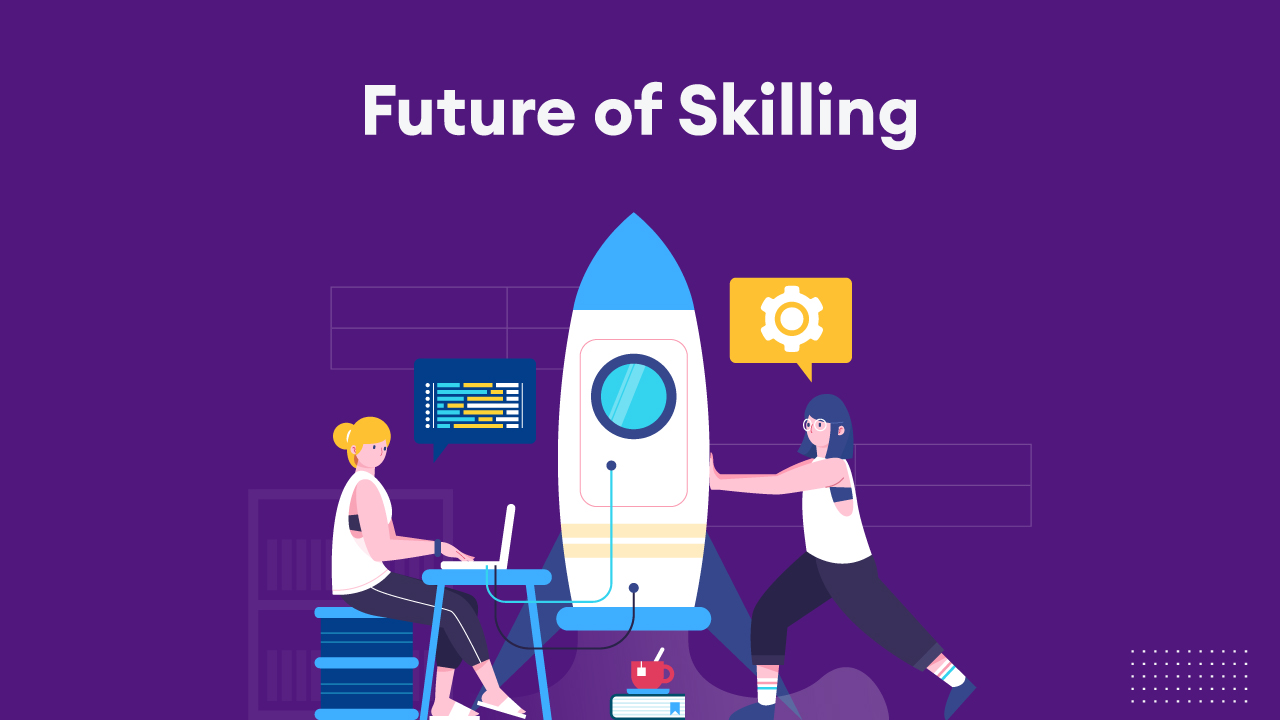Over the years, technology has progressed at an unprecedented pace in every aspect – including how we live, earn, and work. Most jobs require technological skills and with this change, corporate L&D can no longer depend solely on expensive in-person training and face-to-face interactions to fulfill the skill gaps and training needs of their organizations.
As technology is emerging, it is imperative for companies to retrain their workforce and acquire people with the right skills. It’s not always about whether the task is completed; it’s about whether is completed up to the expectations of the leadership which requires the right skills. It becomes critical for organizations to have a strategic plan for talent to make this shift.
Upskilling is no longer to be viewed as a one-time activity, but rather a mindset every employee must embrace. According to Pearson’s first Skills Outlook: Power Skills Report, the 5 power skills that employers are seeking today are Collaboration, Customer Service, Leadership, Attention to detail, and Communication.
How do organizations identify the skill gap and ensure that people have opportunities to learn?
A growing number of organizations are realizing that to remain competitive in the marketplace they must develop their workforce’s skills. We can consider these ideas as a starting point
- Culture of Continuous Learning:
Learning has become a lifelong endeavor. Technological advancements are transforming industries and creating new jobs, which means professionals will need to constantly update their skills. In addition to adapting to changing demands and fostering innovation, a culture of continuous learning can help organizations retain talent. - Technology in Learning:
As artificial intelligence becomes more widespread, there is an increasing demand for individuals to be skilled in digital technologies. Upskilling will not only enhance employability but all things considered, empower individuals to leverage technology for innovation and problem-solving. It is imperative for learning and development departments in today’s world to create multiple touchpoints for their employees to receive training for their growth and to provide on-the-job training. - Stay up-to-date with Trends:
In today’s fast-paced and rapidly evolving business world, it has become more important for employees to stay informed about the latest trends and technologies in their industry for their growth and development. It requires a commitment to continuous learning and a willingness to be open to new ideas and approaches. With a deep understanding of the latest trends, employees can make more informed decisions and strategies to reach their goals.
Conclusion
As the world continues to change, skilling is becoming increasingly important for employees and companies. The future of skilling is all about adaptability, continuous learning, and embracing the opportunities presented by technological advancements. Continuously investing in one’s personal and professional development is what better equips individuals to navigate the changing landscapes and grab better opportunities. Organizations are taking initiatives to embrace the power of skilling and are preparing the future workforce.
The learning and development departments in the companies are motivating employees to grow their soft and hard skills by providing them with continuous training and courses. A platform like Courseplay helps companies with 360-degree employee growth and provides them with a platform that focuses on on-the-job, social, and formal learning of their workforce.

